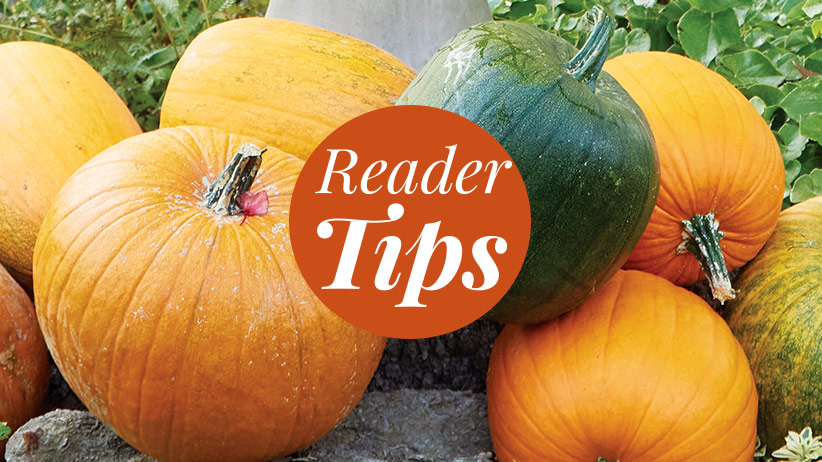Tour an English-inspired garden in Oregon
Considering herself an English garden groupie, Lisa Graff has visited the United Kingdom several times to see gardens and take design classes. So when she and her husband, Brad, built their home in the hills around USDA zone 8 Portland, Oregon, 15 years ago, it was a given that she’d include design elements from her favorite English gardens: a beautiful borrowed view, curved pathways, a water feature, borders packed with flowers and dry-stacked stone walls. And her passion for flowering plants inspired her to start her business, Lux Perennials Nursery.
Watch our fall Talk & Tour With Lisa to learn more about how this garden came to be!

Frame a beautiful view
To emphasize the sight of Mount St. Helens in the distance, Lisa added the fountain and rill, or small stream. The water feature is centered on the house and flows down the slope, leading your eye to the mountain. Even if you aren’t lucky enough to have a mountain vista, you can take advantage of a nearby flowering tree or stately evergreen by selectively pruning a hedge or keeping a fence at a lower height in one spot. You could also lead the eye with colorful containers to the scenery from a nearby park or greenbelt.
You Might Also Like:
Watch More Talk & Tour Videos on YouTube
Tips for Designing a Sensory Garden
Long-Blooming Perennials
Garden Design Book Collection

Colorful English-garden-inspired flower borders
Keeping the flowery beds to the edges of the backyard also preserves the mountain view for maximum appreciation. By choosing similar color palettes in shades of pink, purple and orange, the borders have a cohesive look even though they’re on opposite sides of the yard.
An English garden wouldn’t be complete without a few boxwoods (Buxus spp. and hybrids), and Lisa has several small hedges that supply structure and color all year. She achieved a similar effect along the path below using ‘Purple Dome’ New England aster (Symphyotrichum novae-angliae). This densely growing hybrid works well as a substitute hedge because it stays upright.
Create a tranquil garden space
At the bottom of the slope is a gazebo near the pond. It’s one of Lisa’s favorite places to sit, even on a rainy day. She can read a book or enjoy the peaceful scene of the pond and wild wooded area just beyond. The subtle colors and natural features contrast with the borders packed with colorful blooms behind her.

Tips for growing dahlias in clay soil
Dahlias (Dahlia hybrids) are a staple in Lisa’s fall borders, and though they’re cold hardy in her zone 8 garden, she used to lose them regularly to rot because of the dense clay soil. After talking with nursery professionals that specialize in dahlias, she discovered this method that helps them survive:
- At planting time in spring, dig a wide hole 6 to 7 inches deep.
- Mix equal parts native soil, compost and clean quarter-ten gravel (gravel with no sand in it) in a wheelbarrow.
- Partially refill the hole so the tuber sits 4 to 5 inches deep, and refill with more of the mixture.
- Add a 3-inch layer of gravel mulch to keep crowns from getting too wet.
You Might Also Like:
Find the Right Dahlia for Your Garden
Fabulous Fall Flowers
How to Save Dahlia Tubers
Terrified of Topping Dahlias

Long-lasting garden color
The backyard was full of clay soil when they moved in, so Lisa needed to do something if she wanted to grow all the plants on her wish list. Amending it with compost at the beginning and topping it off every two to three years has improved the texture, and the plants are thriving.
Flower bed combos
Easy-to-find long-blooming plants, such as hardy geranium (Geranium hybrid), Jupiter’s beard (Centranthus ruber), geum (Geum hybrid), catmint (Nepeta spp. and hybrids) and sage (Salvia spp. and hybrids), make up most of the plantings.
Unusual specimens, such as the ornamental rhubarb (Rheum palmatum) that’s blooming in the photo above, punctuate the more common finds. Once the spikes fade, the plants’ enormous leaves take center stage. In other parts of the garden, Jerusalem sage (Phlomis fruticosa), tall Peruvian lilies (Alstroemeria hybrids) and ‘Red Feathers’ echium (Echium amoenum) grab attention.

Design for all-season color
Lisa plans for a succession of blooms and has a collection of plants that provide color from April to November. The two photos above show the same area in summer and late fall. Early in the season, the geum and Jupiter’s beard catch your eye, with loads of bright orange and deep pink flowers. With regular deadheading they go until frost. Soon after, the low mounds of Rozanne hardy geranium begin flowering at the front of the border and continue for up to five months through late fall, creating a mat of lavender-blue blooms.
The towering dahlias and panicle hydrangea fill in by late summer, taking over the starring role the other plants once held. Throughout the garden, different types of hydrangeas — bigleaf (Hydrangea macrophylla), smooth (Hydrangea arborescens), oakleaf (Hydrangea quercifolia) and panicle (Hydrangea paniculata) — provide large, beautiful flowers from June to October.
You Might Also Like:
How to Grow Bigleaf Hydrangeas
Best Panicle Hydrangeas for Your Garden
Grow a Four-Season Hydrangea Border

Add interest to the garden without blooms
Foliage plays an important role at every level of this garden. Lisa loves how burgundy-leaved plants, such as ‘Royal Purple’ smokebush (Cotinus coggygria) and Wine and Roses® and Spilled Wine® weigela (Weigela florida), help all the hot pink and orange flowers really pop.
In addition to pretty foliage, Japanese maples (Acer palmatum) have interesting growth habits. ‘Twombley’s Red Sentinel’ grows into a columnar shape 10 to 12 feet tall and 3 to 5 feet wide, so it’s easy to work into tight spaces. Its red new foliage matures burgundy. Though much smaller, the weeping form of ‘Inaba Shidare’ is a real attention-getter. This pint-sized tree is covered in delicate red leaves and grows just 6 to 8 feet tall after 10 years.
Besides colorful foliage, ‘Sango-kaku’ Japanese maple (also called coral bark maple) sports coral-pink stems that are most prominent once its lacy yellow leaves drop in late fall. Seeds and berries add to the seasonal interest and support wildlife too. For example, rugosa roses (Rosa rugosa) offer months of color, first with pink flowers in spring and summer, then with the large red to purple hips you see in the photo above in fall and winter, so Lisa's garden is brimming with interest all year.















